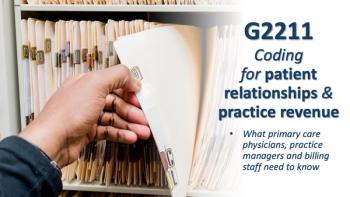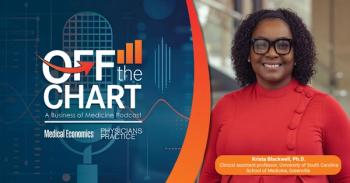
How to Offer Patients an Enhanced Consumer Experience
In today’s consumer-based healthcare market, patients expect personalized, retail-like service along with high quality clinical care.
Today’s patients are looking for more than just high quality clinical care and with increased competition from retail walk-in clinics, it is important to provide them with the enhanced service level of retail and other industries.
Karen Shaffer-Platt, vice president of revenue cycle/patient concierge services at the University of Pittsburgh Medical Center (UPMC) and Edward McQuade, a UPMC executive administrator recently explained how to enhance consumers’ experience at the Medical Group Management Association (MGMA) Annual Conference in San Francisco.
Shaffer-Platt explained that in the past, insurance used to pay for everything. But bigger out-of-pocket expenses and high-deductible plans mean patients are now spending more of their own money. A lot of small businesses, for example, are just putting the money back in employee paychecks with instructions to purchase healthcare benefits independently.
Patients play a bigger part in the selection of their healthcare benefits now, she said. “That’s the future.”
There was a time that people would never leave their doctor, but in today’s market they are likely to seek easier options like a retail clinic if they have an immediate need like a flu shot.
The truth is, patients are consumers now and they want what retail gives them: availability, consistency, affordability, and convenience.
“That’s what they shop for in other industries and what they want from us,” she said.
Shaffer-Platt explained how UPMC has enhanced patient experience, including the addition of a direct call center, self-service options for check-ins, a welcoming staff, and patient education.
She said that it is important to understand the diverse needs of different consumers and not take a one-size-fits-all approach. Millennials, for example, are a digital generation and want to manage their affairs on their mobile devices. This generation also appreciates services like online check-ins and payment options.
Busy professionals may not be able to call during regular hours because of their hectic schedules. Maybe they call after they put their kids to bed, said Shaffer-Platt, so medical practices need to be available. Likewise, older or more traditional patients may prefer a face-to-face interaction or one that allows them to have caregivers or proxies present.
Enhancing patients’ experience at UPMC
Shaffer-Platt described the consumer contact center at UPMC that serves as a single point of contact for patients where they can schedule appointments, find a doctor, and address a number of questions using various forms of communication including calls, emails, and live online chat.
Patients often do not fully understand their insurance policies and are confused about terminology. Employers tell their employees that they didn’t raise premiums but they may instead simply change the packaging to include hidden costs. It is important for practices to counsel and inform patients through services like pre-service estimates, on-demand estimates, simple statements in patient friendly language, and provide easy ways to make payments, she noted, pointing out UPMC’s approach.
As a practice, don’t tell patients you don’t have the technology to process payments a certain way, she said. Simply put: Don’t walk away from payments.
Shaffer-Platt explained how UPMC streamlined patient visit days by introducing self-service technology like kiosks for check-ins and biometric technology that allows quick recognition of patients. A staff person is available for check-out and to help people who don’t want to use the technology, but most like it and are very comfortable with it.
Also, she stressed that staff should make eye contact with the patient, answer their questions, and thank them for choosing your organization.
“When you walk around a Marriott, everyone thanks you,” she said. “Think hotel mentality.”
Finally it is important to personalize patient experience through advanced technology. Patient portals can be used for customer feedback or to send real-time notifications and text messages.
Shaffer-Platt pointed out that when you call Pizza Hut, they remind you that you ordered cheese sticks with your order before or Talbots may send you a message saying your favorite sweater is on sale. Likewise, in healthcare, patient experience can be enhanced by recognizing their preferences and experiences like remembering if someone has trouble with transportation, or prefers appointments at a specific time.
“Every other industry does it,” said Shaffer-Platt. “We have a chance to do it too.”
Newsletter
Optimize your practice with the Physicians Practice newsletter, offering management pearls, leadership tips, and business strategies tailored for practice administrators and physicians of any specialty.









